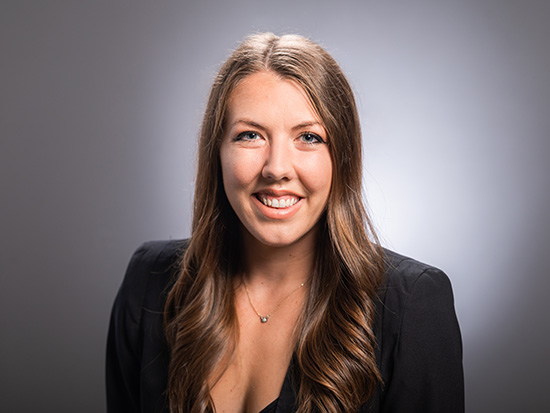 Heith Copes, Ph.D.As a qualitative researcher, Heith Copes, Ph.D., interviews and observes people to learn about and better understand the nuances of their lives and communities. He first developed an interest in this form of research during his time as a graduate student at the University of Tennessee.
Heith Copes, Ph.D.As a qualitative researcher, Heith Copes, Ph.D., interviews and observes people to learn about and better understand the nuances of their lives and communities. He first developed an interest in this form of research during his time as a graduate student at the University of Tennessee.
“Tennessee had a sociology/criminology program, so I went there,” said Copes a professor in the University of Alabama at Birmingham’s J. Frank Barefield, Jr. Department of Criminal Justice. “I worked with a Neal Shover. He was one of the big qualitative criminologists at the time. So that… got me interested in doing qualitative research.”
At first, Copes’ thesis focused on mapping auto theft. Given his proximity to Shover, he pivoted away from studying the broader trends related to theft and, instead, worked to better understanding the people who were committing the acts.
“For my dissertation, I started interviewing people who steal cars,” said Copes. “This methodology is more of how I see the world as compared to quantitative research. I’ve stuck with qualitative [research] since then.”
Copes finished his Ph.D. in 2001 and, soon after, accepted a faculty position in the J. Frank Barefield, Jr. Department of Criminal Justice (which was known as the “Department of Justice Sciences” at the time). When he arrived at UAB, Copes continued to conduct qualitative research with a focus on decision making among those who commit crime. He notes that his approach shifted after an eye-opening interview with a person who had stolen a car.
The topic of drug use emerged during the conversation, and the interviewee was quick to let Copes know that there are important distinctions and nuances embedded in the language others use to describe their lives and experiences.
“Insiders make important distinctions among themselves that outsiders may not recognize at first,” said Copes. “I’m interested in the symbolic boundaries that people make among each other to define themselves in positive ways.”
Copes carried this question with him as he continued to interview people about their lives and behavior for over a decade, and, by 2015, he decided to explore something new. While editing a book on qualitative criminology, he discovered a chapter on visual criminology. The method felt exciting and different to him — in addition, Copes is a self-described fan of “street photography,” so he saw an opportunity to connect that passion with his work. He decided to channel his excitement into a new research project that combined documentary photography and qualitative criminology (also known as “photo-ethnography”).
Since Copes is not a photographer, he invited Jared Ragland—a professional photographer and former staff member in the UAB Department of Art and Art History—to work with him on a photo-ethnography focused on people who use methamphetamines.
“It’s a method that’s not very common in criminology... I would do interviews, and Jared would take documentary photography,” said Copes. “When we started, the goal [was] to act as a counter-visual and a counter-narrative to what most people think of people who use meth — [we want] to show the humanity and complexity and nuance of these people’s lives,” said Copes.
Throughout their partnership, Copes and Ragland have been intentional about reflecting on and amending their approach to photo-ethnography, ensuring that participants have voice and agency in the research. With that in mind, Copes invites the participants to review and comment on the photos and also share their own images.
“They get to direct the nature of the research in some way,” said Copes. “We don’t want to romanticize them, but we also want to portray them with some humanity. That’s the balance we’re trying to strike.”
Using the photographs and qualitative data from the project, Copes published the first-ever photo-ethnography in his discipline’s premiere journal, Criminology.
“People are really interested in the photo-ethnography,” said Copes. “Mainstream criminology is becoming increasingly detached from those who engage in crime and those who are victimized by it. The photographs pull you in. It’s hard to escape them. It reduces the detachment.”
In addition, Copes published an innovative video (accompanied by an essay) in the Journal of Qualitative Criminal Justice and Criminology. Another first in his field.
And, clearly, his work is making an impact. So much so, that the Academy of Criminal Justice Sciences awarded Copes and his colleagues (Jacob Erickson and Andy Hochstetler) “Paper of the Year” in 2021. They received the award for a paper they published in Justice Quarterly titled, “Meth Cooking as a Job: Identity and Dirty Work.” It was the first qualitative paper to receive the award.
After completing his project on people who use methamphetamines, Copes shifted the focus of his research. Specifically, he and Ragland have spent the past two years interviewing and photographing people who use peyote in religious ceremonies. Much like his past work, he developed relationships with the participants and created space for them to open up about their lives. He hopes to publish the research in the near future.
Moving forward, Copes plans to continue iterating on his approach to photo-ethnography. He and Ragland are interested in equipping future participants with technical skills and cameras so they can photograph moments in their lives, then, hopefully, display their work in a public setting. For Copes, it’s a way to create opportunities for the participants to further shape the work and the narrative.
“The bigger method is about giving back to participants, empowering the participants to shape the direction of the research,” said Copes.


